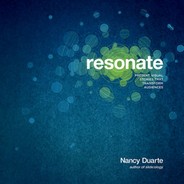Change Your World 199
Anyone who takes even a quick look at the hundreds of
slides submitted as evidence in the Enron trial will see
that presentations can play a conspicuous role in the
perpetration of lies. Presentations are a powerfully per-
suasive tool that should be used for good and not evil.
Jeff Skilling (chief executive officer), Kenneth Lay (chair-
man of the board), and Richard Causey (chief account-
ing officer) all had several counts against them based
on their presentations. All three were charged with ten
counts each for their earnings-call presentations, and
Ken Lay was charged with two counts for employee pre-
sentations. Because their presentations were transmit-
ted into different states via phones and web technology,
these executives were also charged with the federal
crime of wire fraud. In fact, Skilling was sentenced to
fifty-two months for each of the five counts involving
presentations for which he was convicted.
5
Presentations got these executives into this mess, while
the right presentation could have prevented it altogether.
• Scandal started with a presentation: Andrew Fastow,
Enron’s chief financial officer, was the mastermind of
clever accounting who used “special purpose entities”
to hide billions of dollars and ultimately line his pockets
with over $45 million. According to USA Today, Fastow
gave “a slick presentation on the LJM partnerships”
(the organization created to hide debt), and the “Enron
managers and analysts stared at each other in confu-
sion. It sounded too good to be true.”
6
A slick presenta-
tion by a slick villain lured them into this mess.
• Scandal could have been prevented with a presenta-
tion: A detailed presentation given by Arthur Andersen’s
Don’t Use Presentations for Evil
David Duncan in February 1999 feebly warned the Enron
Board of Director’s audit committee of the company’s
risky accounting practices. This presentation could have
saved Enron. If Duncan had boldly built a slide in capital
letters saying “ENRON HAS RISKY PRACTICES THAT
NEED INVESTIGATION,” its demise might have been
avoided. Instead, Duncan’s notes found on the margin
of his dense slide presentation said, “Obviously, we are
on board with all of these [risks].”
7
Enron’s top executives played by their own rules. They
made risky bets motivated by greed and ambition. The
collapse was inevitable. As masters of the PowerPoint
chart, they showed upward projections for sales and
profits, encouraging employees to invest while they
themselves were frantically removing their own money.
Employees who raised questions were mysteriously moved
to other departments. Skilling distracted investors by pro-
posing bold strategies for the next big score, like entering
the broadband and weather futures markets. (What’s an oil
company doing brokering weather, anyway?)
They aggressively designed communication that
abandoned reason and truth altogether, and they used
presentations as a propaganda device to spread lies to
employees, analysts, and stockholders about Enron’s
performance. In the ensuing collapse, the credibility of the
board and the executives involved was obliterated, and
tens of thousands of employees were financially ruined.
Oral communications have built and toppled kingdoms.
Presentations are a powerfully persuasive medium that
should be used to build up—not tear down.
CH009.indd 199CH009.indd 199 17/09/10 2:12 PM17/09/10 2:12 PM
..................Content has been hidden....................
You can't read the all page of ebook, please click here login for view all page.
